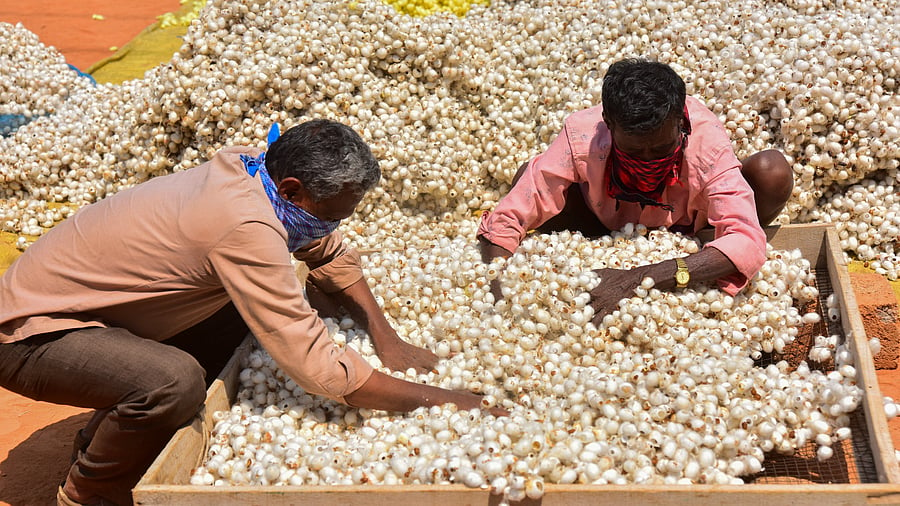
Credit: Special Arrangement
Bengaluru: Karnataka, India’s leading silk-producing state, is witnessing a drop in raw silk output this year, reflecting a broader national decline.
The Central Silk Board (CSB) has projected India’s total raw silk production at 30,614 tonnes for the 2024-25 marketing year (April-December) — a sharp fall from last year’s 38,913 tonnes.
This drop marks the first decline in four years, following a steady upward trend in production. After hitting 33,770 tonnes in 2020-21, the country saw gradual increases over the next three years: 34,903 tonnes in 2021-22, 36,582 tonnes in 2022–23, and a peak of 38,913 tonnes in 2023-24.
Officials from the Central Silk Board, explaining the data, say that silk production after December could make up the difference between the two years.
“The data is provisional and does not include estimates of raw silk produced between January and April, production may cross 38,000 to 40,000 MT,” said Kumaresan Periasamy, scientist, Central Silk Board.
However, sericulture farmers in Sidlaghatta and Ramanagara districts — renowned for cocoon markets and silk reeling — do not confer. “There have been many diseases that have affected the mulberry crop in the past five years. As a result, many have shifted out of the profession,” says H G Gopalagowda, a farmer from Sidlaghatta.
Many farmers who have quit sericulture have moved on to growing fruits, flowers and vegetables.
Mulberry raw silk accounts for 29,000 tonnes of the total raw silk produced in 2023-24, and Karnataka accounts for 40% of the country’s total production.
Even just four years ago, the presence of a well-articulated marketing and processing system in Ramanagara and Siddlagatta cocoon markets meant that sericulture was the most profitable of agricultural ventures.
However, stagnant prices afforded to cocoons and stiff competition from silk imported from China have been a dampener for sericulture farmers.
“Over these years, there has been a crisis of labour and rising costs and losses due to pests and diseases,” Gopalagowda adds. While a kilogram of the crossbreed variety of silkworm cocoons can fetch up to Rs 650, input costs have risen to Rs 500 per kg.